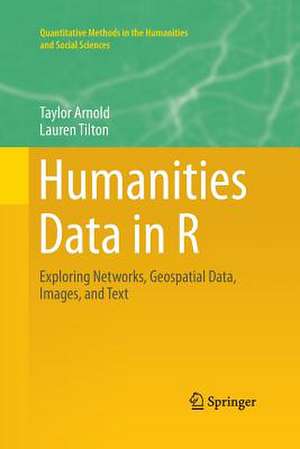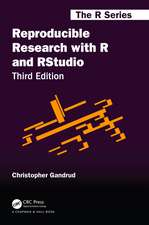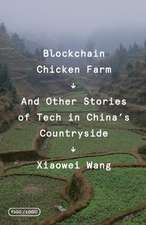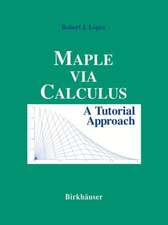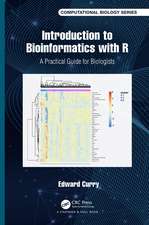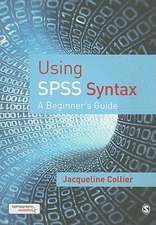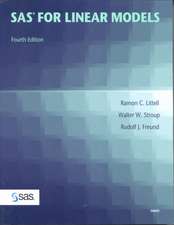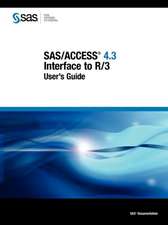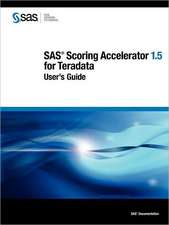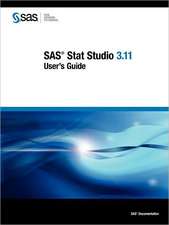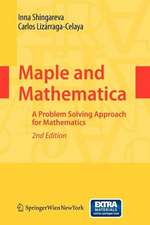Humanities Data in R: Exploring Networks, Geospatial Data, Images, and Text: Quantitative Methods in the Humanities and Social Sciences
Autor Taylor Arnold, Lauren Tiltonen Limba Engleză Paperback – 23 aug 2016
| Toate formatele și edițiile | Preț | Express |
|---|---|---|
| Paperback (1) | 483.92 lei 43-57 zile | |
| Springer International Publishing – 23 aug 2016 | 483.92 lei 43-57 zile | |
| Hardback (1) | 590.30 lei 43-57 zile | |
| Springer International Publishing – 28 aug 2024 | 590.30 lei 43-57 zile |
Din seria Quantitative Methods in the Humanities and Social Sciences
- 17%
 Preț: 525.41 lei
Preț: 525.41 lei - 17%
 Preț: 393.97 lei
Preț: 393.97 lei - 18%
 Preț: 904.74 lei
Preț: 904.74 lei - 18%
 Preț: 724.17 lei
Preț: 724.17 lei - 18%
 Preț: 1077.71 lei
Preț: 1077.71 lei -
 Preț: 388.52 lei
Preț: 388.52 lei - 18%
 Preț: 1015.70 lei
Preț: 1015.70 lei -
 Preț: 416.40 lei
Preț: 416.40 lei - 18%
 Preț: 787.47 lei
Preț: 787.47 lei - 18%
 Preț: 780.52 lei
Preț: 780.52 lei - 18%
 Preț: 1117.50 lei
Preț: 1117.50 lei - 18%
 Preț: 943.57 lei
Preț: 943.57 lei - 15%
 Preț: 643.48 lei
Preț: 643.48 lei - 18%
 Preț: 729.68 lei
Preț: 729.68 lei - 18%
 Preț: 734.09 lei
Preț: 734.09 lei - 18%
 Preț: 905.23 lei
Preț: 905.23 lei -
 Preț: 454.92 lei
Preț: 454.92 lei - 18%
 Preț: 894.34 lei
Preț: 894.34 lei -
 Preț: 353.99 lei
Preț: 353.99 lei - 18%
 Preț: 727.31 lei
Preț: 727.31 lei
Preț: 483.92 lei
Nou
Puncte Express: 726
Preț estimativ în valută:
92.63€ • 100.65$ • 77.86£
92.63€ • 100.65$ • 77.86£
Carte tipărită la comandă
Livrare economică 21 aprilie-05 mai
Preluare comenzi: 021 569.72.76
Specificații
ISBN-13: 9783319366715
ISBN-10: 3319366718
Pagini: 211
Ilustrații: XIII, 211 p.
Dimensiuni: 155 x 235 mm
Greutate: 0.33 kg
Ediția:Softcover reprint of the original 1st ed. 2015
Editura: Springer International Publishing
Colecția Springer
Seria Quantitative Methods in the Humanities and Social Sciences
Locul publicării:Cham, Switzerland
ISBN-10: 3319366718
Pagini: 211
Ilustrații: XIII, 211 p.
Dimensiuni: 155 x 235 mm
Greutate: 0.33 kg
Ediția:Softcover reprint of the original 1st ed. 2015
Editura: Springer International Publishing
Colecția Springer
Seria Quantitative Methods in the Humanities and Social Sciences
Locul publicării:Cham, Switzerland
Cuprins
Set-up.- A Short Introduction to R.- EDA I Continuous and Categorical Data.- EDA II Multivariate Analysis.- EDA III Advanced Graphics.- Networks.- Geospatial Data.- Image Data.- Natural Language Processing.- Text Analysis.- Appendix.
Recenzii
Arnold and Tilton are a brilliant team, and this highly accessible book will appeal to a wide range of digital humanists. The text analysis chapters are very good, and the authors' work to develop an R package for interacting with the Stanford CoreNLP java Library fills a huge hole in the R text processing landscape.
Matthew L. Jockers, University of Nebraska-Lincoln; author of Text Analysis with R for Students of Literature (Springer, 2014)
This is the first book that covers analysis of all main parts of humanities data: texts, images, geospatial data, and networks. Now digital humanities finally has its perfect textbook. This is the book many of us were awaiting for years. It teaches you R (the most widely used open source data analysis platform today worldwide) using many examples. The writing is very clear, and information is organized in a logical and easy to follow manner. Whether you are just considering working with humanities data or already have experience, this is the must read book.
Lev Manovich, The Graduate Center, City University of New York; author of The Language of New Media (MIT, 2001)
This book gives a concise yet broadly accessible introduction to R, through the lens of exploratory data analysis, coupled with well-planned forays into key humanities data types and their analysis -- including a nice primer on network analysis.
Eric D. Kolaczyk, Boston University; author of Statistical Analysis of Network Data with R (Springer, 2014)
Matthew L. Jockers, University of Nebraska-Lincoln; author of Text Analysis with R for Students of Literature (Springer, 2014)
This is the first book that covers analysis of all main parts of humanities data: texts, images, geospatial data, and networks. Now digital humanities finally has its perfect textbook. This is the book many of us were awaiting for years. It teaches you R (the most widely used open source data analysis platform today worldwide) using many examples. The writing is very clear, and information is organized in a logical and easy to follow manner. Whether you are just considering working with humanities data or already have experience, this is the must read book.
Lev Manovich, The Graduate Center, City University of New York; author of The Language of New Media (MIT, 2001)
This book gives a concise yet broadly accessible introduction to R, through the lens of exploratory data analysis, coupled with well-planned forays into key humanities data types and their analysis -- including a nice primer on network analysis.
Eric D. Kolaczyk, Boston University; author of Statistical Analysis of Network Data with R (Springer, 2014)
Notă biografică
Taylor Arnold is Senior Scientist at AT&T Labs Research and Lecturer of Statistics at Yale University. His research focuses on statistical computing, numerical linear algebra, and machine learning. He is the technical director of Photogrammar (photogrammar.yale.edu).
Lauren Tilton is a doctoral candidate in American Studies at Yale University. Her interests include documentary media, 20th century history, and visual culture. She is an active member of the digital humanities community, serving as the humanities director of Photogrammar and co-Principal Investigator of the Participatory Media project.
Lauren Tilton is a doctoral candidate in American Studies at Yale University. Her interests include documentary media, 20th century history, and visual culture. She is an active member of the digital humanities community, serving as the humanities director of Photogrammar and co-Principal Investigator of the Participatory Media project.
Textul de pe ultima copertă
This pioneering book teaches readers to use R within four core analytical areas applicable to the Humanities: networks, text, geospatial data, and images. This book is also designed to be a bridge: between quantitative and qualitative methods, individual and collaborative work, and the humanities and social scientists. Exploring Humanities Data Types with R does not presuppose background programming experience. Early chapters take readers from R set-up to exploratory data analysis (continuous and categorical data, multivariate analysis, and advanced graphics with emphasis on aesthetics and facility). Everything is hands-on: networks are explained using U.S. Supreme Court opinions, and low-level NLP methods are applied to short stories by Sir Arthur Conan Doyle. The book’s data, code, appendix with 100 basic programming exercises and solutions, and dedicated website are valuable resources for readers. The methodology will have wide application in classrooms and self-study for the humanities, but also for use in linguistics, anthropology, and political science. Outside the classroom, this intersection of humanities and computing is particularly relevant for research and new modes of dissemination across archives, museums and libraries.
Caracteristici
Provides a user-friendly beginners guide to the key concepts in the digital humanities by focusing on four major types of humanities data structures: networks, text corpora, geospatial data, and images Assumes no prior programming experience Suitable for a one-semester course at the university level for undergraduate, graduate and professional students, or as half or full-day tutorial or seminar
